
Covered almost entirely by a virgin rainforest and devoid of crowded beach resorts, Dominica is the youngest island in the Caribbean’s Lesser Antilles, and as such, still boasts an ample volcanic activity. Nestled in the southern part of the Island, the Valley of Desolation and the nearby Boiling Lake are a testament of Dominica’s volcanic past and present, providing an otherworldly backdrop for intrepid hikers who wish to explore the island’s unspoiled beauty.
Part of Morne Trois Pitons National Park, a UNESCO world heritage site since 1997, the Valley of Desolation and the nearby Boiling Lake are accessible only by a 6-hour and 13-kilometer-long round hike (3 hours/ 6.5 kilometers on each direction).
The trailhead is located next to Titou Gorge, on the outskirts of Laudat Village, while the trail itself is divided to three parts, of which, the first winds through a dense rainforest that perches atop a hillside, followed by a quick descent to the Breakfast River.
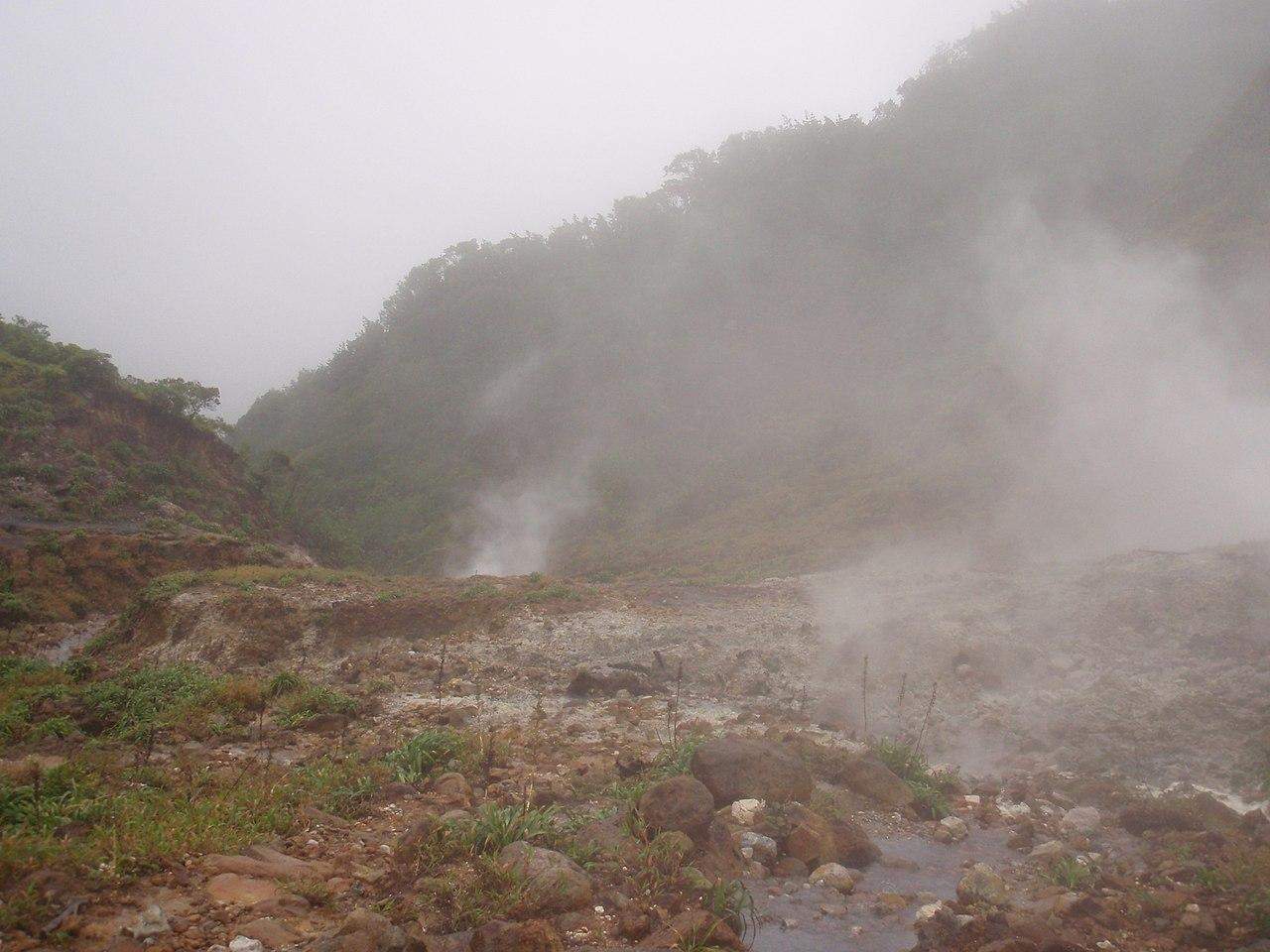
The barren surface of the valley shrouded in mist and steam
photography by: XeresNelro/ Wikimedia Commons
After reaching the river, you’ll have to climb all the way up to the top of Morne Nicholls, a 965-meter-high mountain (3168 ft), whose empty summit provides a breathtaking panoramic view of the entire island, the Caribbean Sea and the Atlantic Ocean. Following the arduous climb are another descent and ascent to the next ridge, which overlooks the Valley of Desolation.
The next and last leg of the journey is the perilous hike downwards to the valley across the steep slope. Besides being nearly vertical, the pathway is also muddy and slippery, and so, extra caution is strongly required.
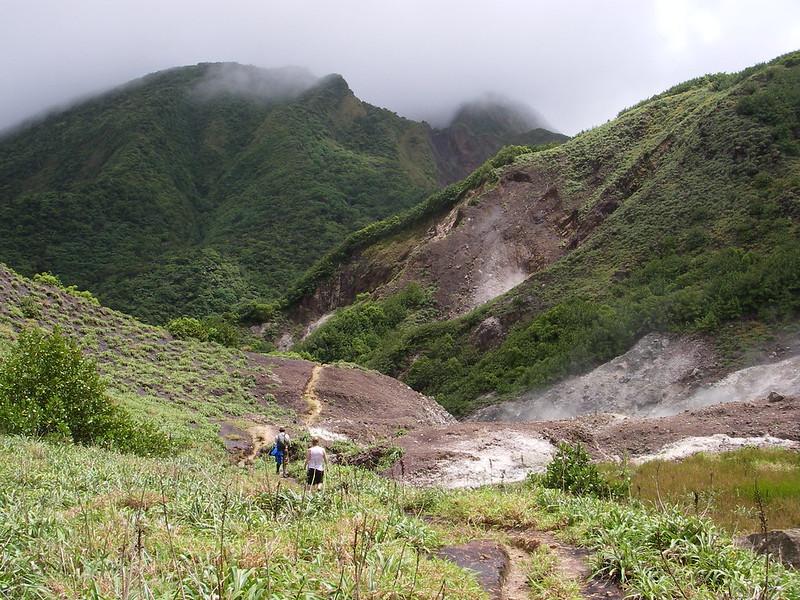
The semi-marked pathway along the Valley of Desolation
photography by: Jean & Nathalie/ Flickr
As its name suggests, the Valley of Desolation is a barren patch of land, devoid of any vegetation due to the perpetual volcanic activity around. Originally formed from 3 volcanic craters, the valley is dominated by thick clouds of steam and mist all year round, emanating from its numerous fumaroles, Sulphur vents and hot springs, the latter of which can serve as a natural jacuzzi to soak your feet in after the perilous hike.
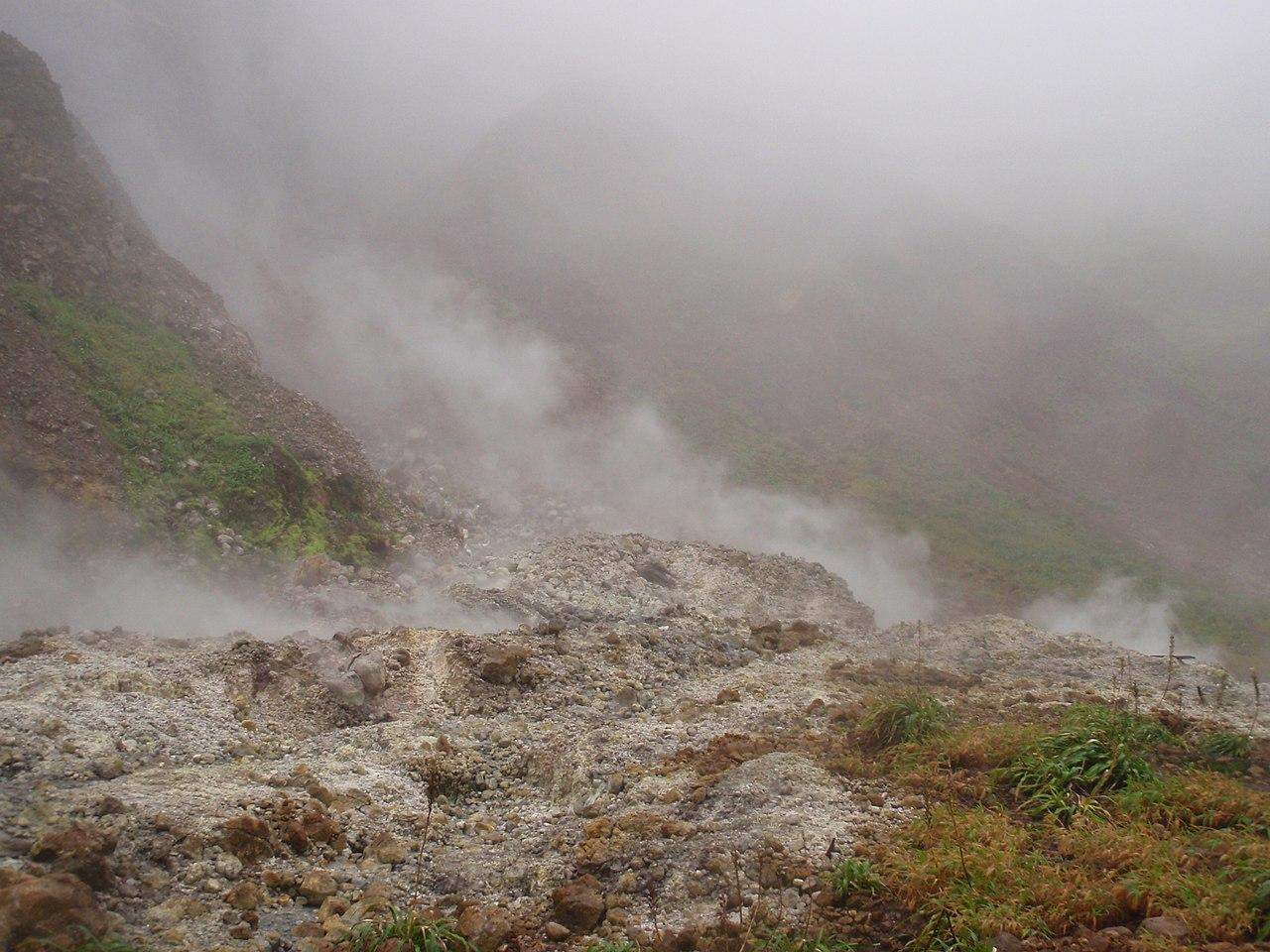
The valley under extreme foggy conditions, with the fumaroles adding their fair share of fumes
photography by: XeresNelro/ Wikimedia Commons
The somewhat extraterrestrial landscape is also home to dozens of bubbling and yellowish mud volcanoes, whose soggy content supposedly has a myriad of health benefits, particularly for skin care.

The sheer contrast between the valley’s desert-like terrain to the surrounding lush rainforest
photography by: Mickaël T./ Flickr
Following the deadly Hurricane Maria in 2017, most of the trail’s last segment was washed away, making it far more challenging to navigate in the now unmarked path. As a result, unexperienced hikers will find it difficult to orientate themselves along the trail, and so, hiring a guide (usually at the cost of 100 USD) is warmly recommended. Otherwise, follow the river that flows out of the valley, after which you’ll have to cross a series of small mildly-warm streams and verdant hills, from where our next protagonist, the Boiling Lake, is only minutes away.
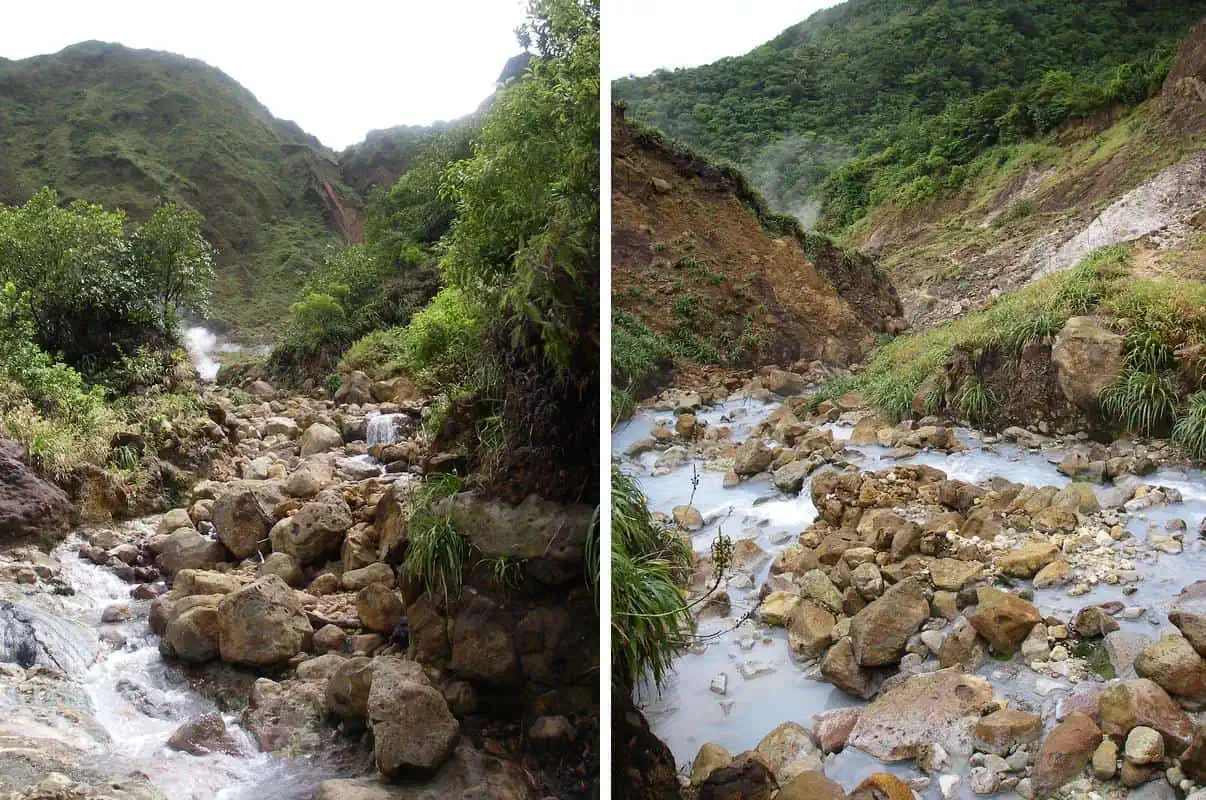
The shallow river that flows along the trail
photography by: Jean & Nathalie/ Flickr
Looming out of the lush hillside, the aptly named Boiling Lake is a fumarole inundated with water which upon contact with the hot gases that escape the volcanically active subsurface, is heated to a boiling temperature. It might come as a surprise, but this hidden 60-meter-wide simmering pot is the second largest boiling lake in the world, surpassed only by New Zealand’s Frying Pan Lake.

The white vapor emanating from the Boiling Lake
photography by: Jean & Nathalie/ Flickr
Intermittently shrouded by water vapor, the blistering pool is not always clearly visible as the clouds of steam that engulf its surface occasionally block the view. Nevertheless, patiently waiting until the fumes are dispersed is incredibly rewarding, with the sight of the bubbling pond being awe-inspiring.
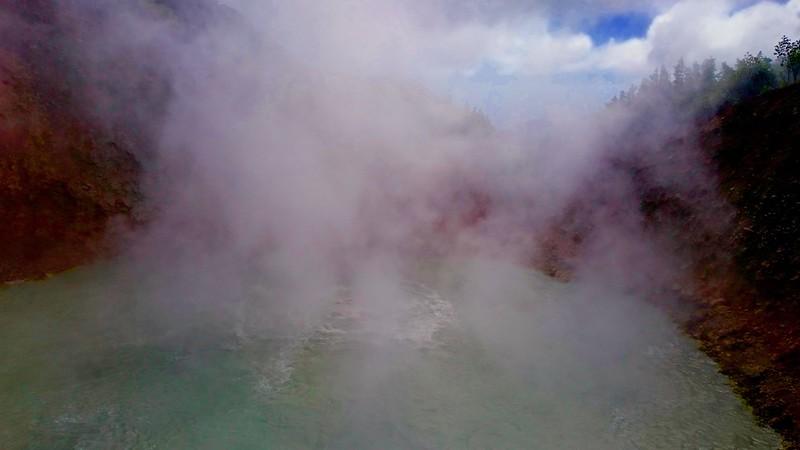
The lake under low-visibility conditions, the result of the constant emission of water vapor
photography by: Mickaël T./ Flickr
The Boiling Lake, whose water ranges between pale-blue and gray, is incessantly replenished by a couple of small streams as well as rain showers. However, throughout the years, the lake’s level of water fluctuated from being nearly empty to excessively full, where water spilled over to the surrounding forest, albeit, much of time its depth sits at around 60 meters.
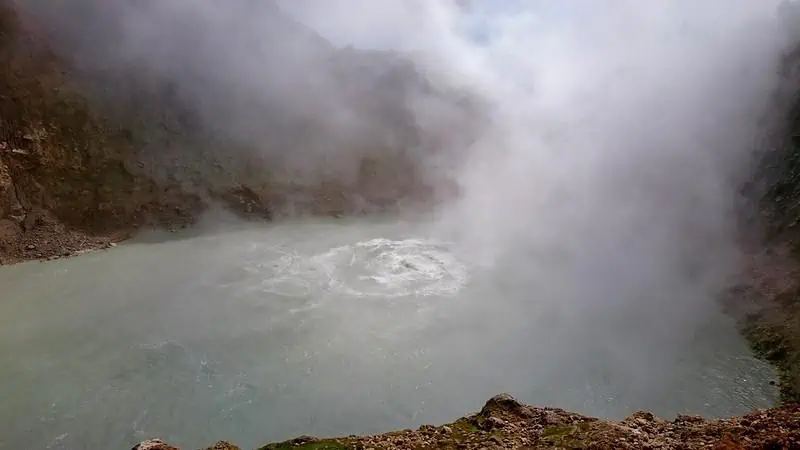
The Boiling Lake at its fullest glory, looking as if it is a large pot of soup sitting on a stove
photography by: Mickaël T./ Flickr
It goes without saying, but unless you want to become a well-cooked ingredient amid the scorching hot soup below, keep away from the water, which despite their tempting appearance can reach up to 92 °C even at the outer parts of the lake.

The vertical cliff that surrounds most the lake
photography by: Mickaël T./ Flickr